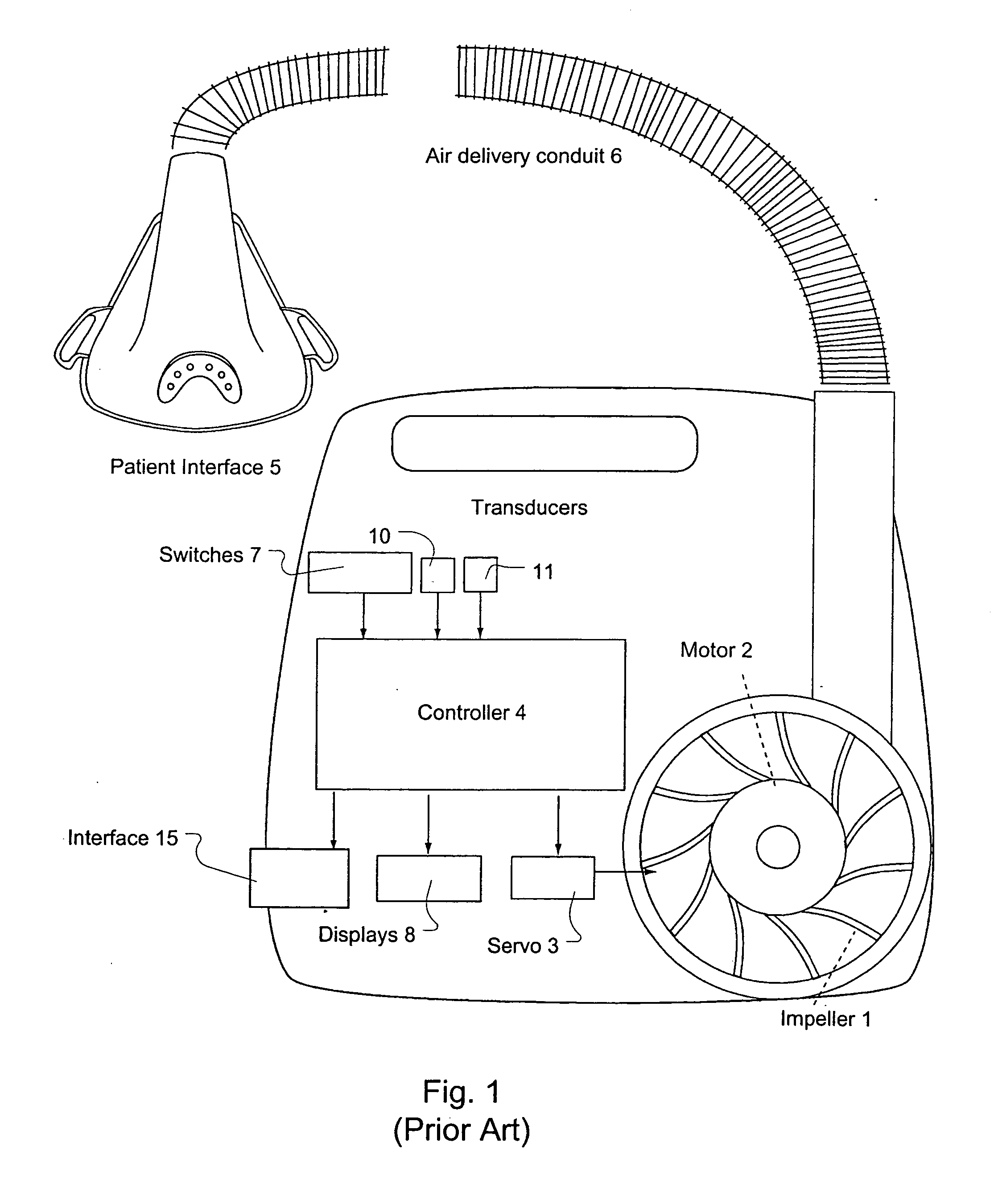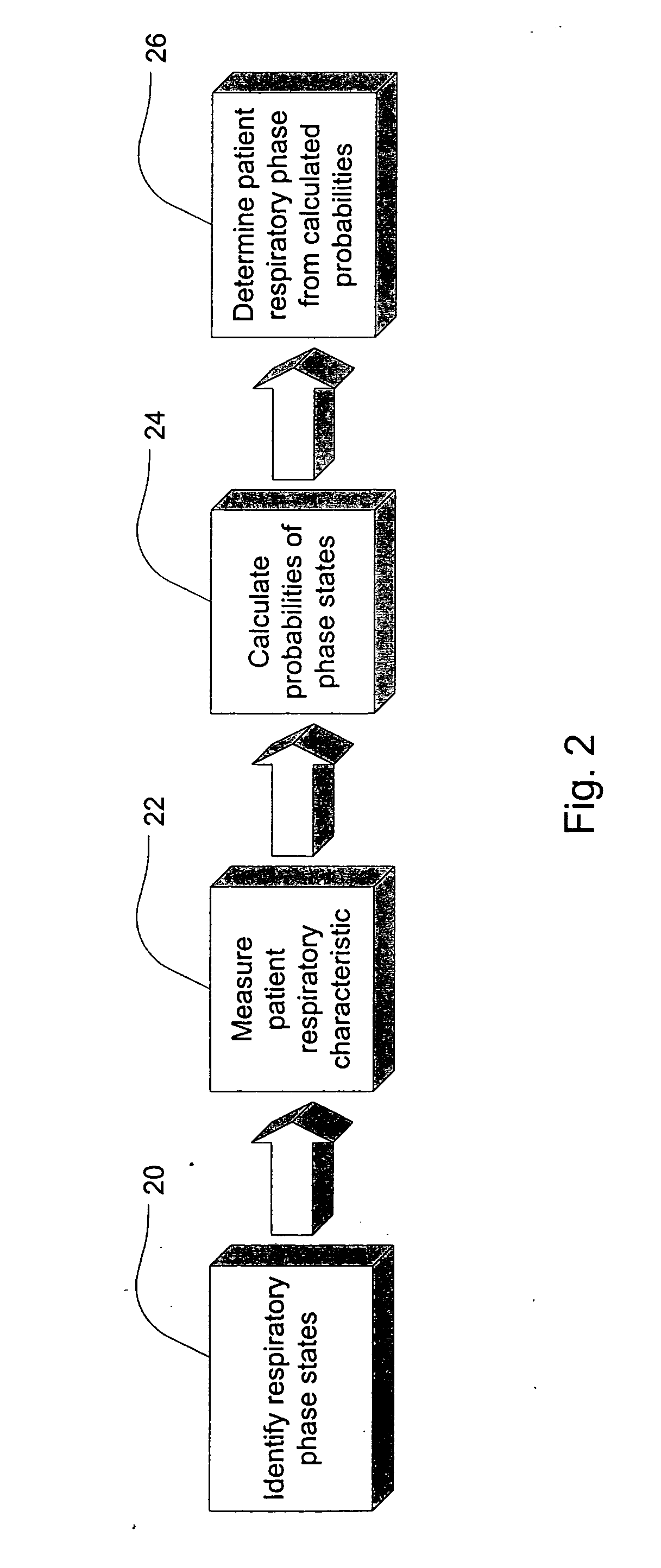Ventilator patient synchronization
a ventilator and patient technology, applied in the field of synchronizing ventilators, can solve the problems of simple threshold tests that may fail when breaths are irregular, and achieve the effect of increasing the likelihood
- Summary
- Abstract
- Description
- Claims
- Application Information
AI Technical Summary
Benefits of technology
Problems solved by technology
Method used
Image
Examples
Embodiment Construction
[0019] The invention provides a method and apparatus for improved ventilator patient synchronization in which the most likely phase is determined on the basis of flow and rate of change of flow information using Bayes' theorem or some similar formula for assessing conditional probability. In an identifying step 20 as shown in FIG. 2, according to the invention, the respiratory cycle is divided or partitioned into a number of distinct states, for example, early inspiration, mid-inspiration, late inspiration, early expiration, mid-expiration, late expiration, pause, sigh and cough. When the method and apparatus according to the invention are being used, flow and pressure observations are made continuously and at each time point in a measuring step 22. In a calculating step 24, probabilities or likelihoods are determined. The likelihood of the phase corresponding to each of the states is determined preferably using Bayes' theorem as shown in equation 1, supra. For example, in a system ...
PUM
 Login to View More
Login to View More Abstract
Description
Claims
Application Information
 Login to View More
Login to View More - R&D
- Intellectual Property
- Life Sciences
- Materials
- Tech Scout
- Unparalleled Data Quality
- Higher Quality Content
- 60% Fewer Hallucinations
Browse by: Latest US Patents, China's latest patents, Technical Efficacy Thesaurus, Application Domain, Technology Topic, Popular Technical Reports.
© 2025 PatSnap. All rights reserved.Legal|Privacy policy|Modern Slavery Act Transparency Statement|Sitemap|About US| Contact US: help@patsnap.com



